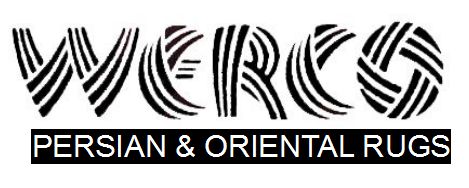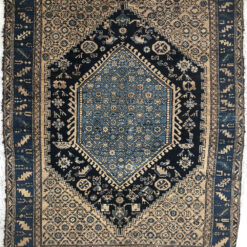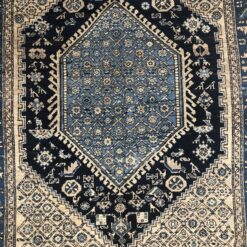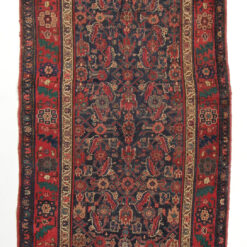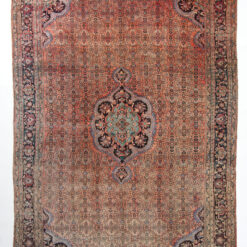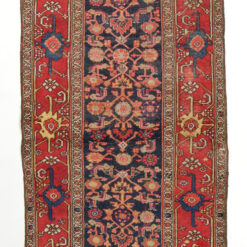Antique Persian Bidjar Rugs
Bidjar is a town in Northwestern Iran,populated mainly by Kurds, whose artistic sense and culture is clearly seen in the region’s grand antique carpets. The Bidjar name is also used to describe the antique rugs that were produced in the many villages in the surrounding vicinity. A small city of twenty thousand at the turn of the century, Bijar was the center of a major weaving area. Bidjar carpets are world renowned for their superb artistry, craftsmanship, and excellent material, and can be distinguished by their heavy and thick wool foundation.They are highly respected by collectors and rug enthusiasts for their uniqueness, strength of construction and great decorative impact. They are commonly compatible with a wide range of traditional and contemporary decors.
Construction:Rugs from Bidjar are known for their durable construction and strong, raised pile. Weavers in Bidjar used double weft or double knot construction along with a number of implements to create an extremely firm pile using the symmetric Turkish or Ghiordes knot.A small number of Bidjar rugs were also produced using the asymmetric Persian knot along with traditional curvilinear patterns from Persia. Goat hair is another fiber that is occasionally seen in rugs from the region. Weavers in Bidjar used a unique combination of yarns for the weft to create the signature look and feel of the firm pile. First, a dampened shoot of thick weft is inserted and tamped down with tools to secure the knots. The weaver follows this with a second shoot of finer yarn to secure the entire row in place.Wool is the most common foundation found in antique Bidjar rugs. However, cotton was also used. Many of the oldest Bidjar rugs are extremely coarse and incapable of being folded while later pieces and rugs produced in the neighboring village of Halvai tend to be thinner and finer.
Sizes: Examples of weavings from Bidjar include small-format rugs as well as long corridor carpets. However, large-format pieces are relatively rare.
Patterns: The many designs depict the Kurdish influence of the area and often floral and classical geometric motifs are employed as well as the use of large, whimsical medallion designs. Stylized allover flower and winery motifs are also found in the small Bijar (Bidjar) village pieces and larger city carpets alike. but they cannot be identified readily by their patterns, for their repertoire is quite rich and varied. They are distinguished by primarily by their weave, which is perhaps the densest and most durable of all oriental rugs. Bijar carpets were produced in a classical medallion format as well as in allover designs and pictorial or garden patterns. The quality of their wool is lustrous and soft, the drawing at times classically precise or wildly tribal.
Colors: Bidjar’s carpet weaving traditions were formed through a combination of cultural isolation and assimilation that is evidenced in the diverse range of designs used in the region as well as the continued use of natural dyes throughout the 1920s when many other regions adopted modern methods. The rugs of Bidjar encompass a broad range of styles and patterns that makes them difficult to define or distinguish from other regions.The diverse antique Bijar rug color palette, from soft to emerald greens, a full range of blues and yellows to fiery rich red, tomato or deep terra cotta, demonstrates the great skill of its dyers.
SKU: 13076
